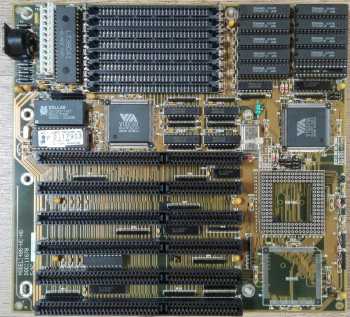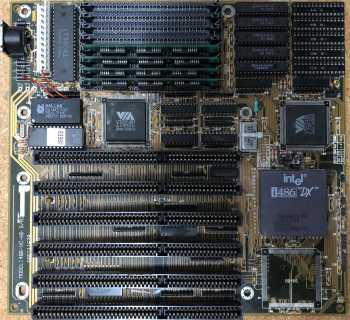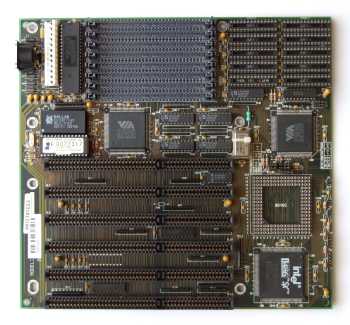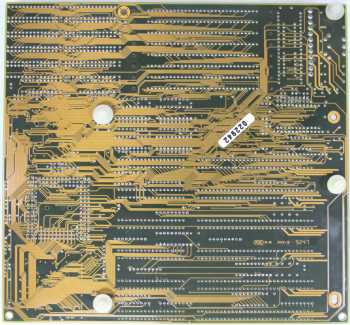- FIC 486-HC-HD
- DALLAS RTC coin cell empty
The motherboard's Real-Time Clock (RTC) chip contains a coin cell that may have drained, causing the loss of CMOS settings. This can result in an inability to save settings, causing system instability or failure to boot. To fix this, the RTC chip can be replaced with an equivalent or repaired by cutting into it and soldering on a new external coin cell holder. Replacement guides are available at https://github.com/necroware/nwX287 or https://github.com/necroware/nw12887, depending on the actual chip used.
- Bad/shorted tantalum capacitors
Owners of this board have reported tantalum capacitor failures on this board. Make sure there's no short before turning on this board for the first time.
- Slow cache without "dirty bit" chip installed
This motherboard uses a chipset that does not support a 7+1 bit tag system for cache, and requires a dedicated SRAM chip for dirty bit tracking. If this chip is not installed, all blocks in cache will always be marked as dirty and main memory latency will be significantly higher.
Note on bios: ALL bioses are fully interchangable with the 4386 version of this board.
Note on multiplier setting CPU: Some versions require the JK1+JK2 jumpers to be in the same position in order to operate. position 1-2 on both is x1 clock speed and 2-3 on both is x2 clockspeed.
DOC:11670
"Alter Ram" (Dirty bit) cache chip should be installed in the socket labelled TAG1 or M10, which is marked as optional in the manual. An 8Kx8 chip is needed for 64/128KB cache and a 32Kx8 for 256KB.
AMI - 2 entries
Award - 1 entry
Disclaimer
The info found in this page might not be entirely correct. Check out this guide to learn how you can improve it.
 Image 1 of 7 (Microhouse)
Image 1 of 7 (Microhouse)
 Image 2 of 7 (Elke Wehmer)
Image 2 of 7 (Elke Wehmer)
 Image 3 of 7 (andre_6)
Image 3 of 7 (andre_6)
 Image 4 of 7 (Darkscop)
Image 4 of 7 (Darkscop)
 Image 5 of 7 (Appaloosa)
Image 5 of 7 (Appaloosa)
 Image 6 of 7 (Elke Wehmer)
Image 6 of 7 (Elke Wehmer)
 Image 7 of 7 (Clous)
Image 7 of 7 (Clous)